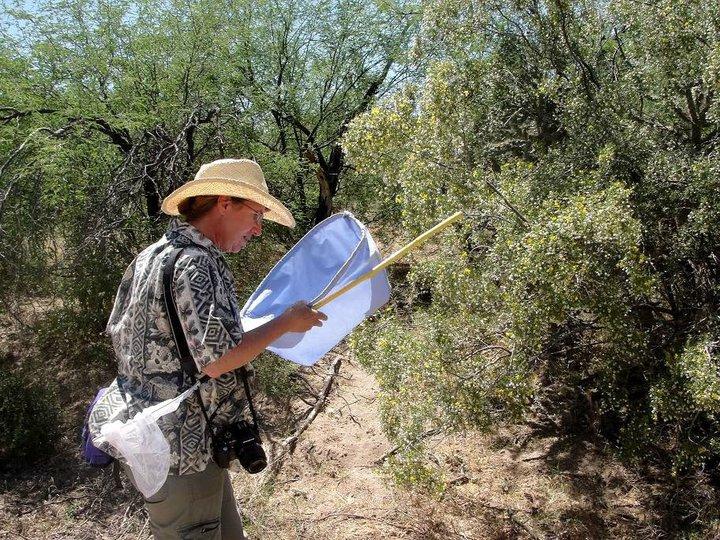In the latest issue of Esquire, the striking sci-fi documentary Alien: Earth takes center stage, captivating audiences with its vivid portrayal of extraterrestrial life and its interaction with our planet’s ecosystem. But how much of the film’s intricate biological science holds up under real-world scrutiny? To separate fact from fiction, Esquire consulted a leading entomologist who meticulously examined the documentary’s claims about alien species, their physiology, and ecological impact. The result offers a clearer understanding of where Alien: Earth stays grounded in scientific reality-and where it boldly ventures into speculative territory.
Entomologist Evaluates Accuracy of Alien-Inspired Insect Depictions
Dr. Lila Simmons, a leading entomologist specializing in evolutionary adaptations, meticulously examined the insect designs featured in Alien: Earth, revealing a fascinating blend of scientific fact and creative liberties. She praised the film’s depiction of biomechanical exoskeletons and sensory appendages, which align closely with real-world insect physiology. “The filmmakers certainly did their homework on morphology,” Simmons explained, noting that many of the alien species share remarkable similarities with extremophile insects, such as tardigrades and deep-sea crustaceans. However, she also pointed out that some features-like bioluminescent communication patterns-were exaggerated beyond current scientific understanding, serving more as a narrative device than feasible biology.
Below is a quick breakdown of which elements were grounded in science and which leaned toward creative embellishment:
| Feature | Scientific Accuracy | Commentary |
|---|---|---|
| Exoskeleton Composition | High | Inspired by chitin and biomineral layers found in arthropods. |
| Locomotion Mechanics | Moderate | Sci-fi wing structure exceeds insect muscle limitations. |
| Communication Signals | Low | Bioluminescent patterns are speculative and dramatized. |
- Realistic: The ability to adapt exoskeleton hardness for defense mirrors actual insect survival strategies.
- Imaginative: Multidirectional eyes with hyperspectral vision have no current analogue but add to the alien mystique.
- Misrepresented: The speed and fluidity of movement disregard biomechanical constraints observed in terrestrial insects.
Scientific Breakdowns Reveal What Alien Earth Gets Right and Wrong
When dissecting the biology behind Alien: Earth, the entomologist highlighted several scientifically plausible elements alongside some glaring inaccuracies. The depiction of extraterrestrial insectoid creatures borrowing traits from Earth’s arthropods-such as segmented exoskeletons, multi-jointed limbs, and complex compound eyes-rings true in the context of convergent evolution. However, the film’s portrayal of these aliens possessing rapid regenerative abilities and instantaneous neural communication ventures into speculative territory. According to the expert, while such traits are extraordinary, they stretch beyond the biological limits observed in terrestrial insects, where regeneration is often slow and neural signals depend on more conventional synaptic transmission.
- Accurate Depictions: Exoskeleton structure, limb articulation, compound eyes
- Creative Liberties: Instant neural sync, swift regeneration, flight mechanics in low gravity
- Unrealistic Aspects: Unlimited lifespan, bioluminescent communication used as primary language
| Feature | Earth Insects | Alien Earth Creatures |
|---|---|---|
| Regeneration Speed | Days to weeks | Seconds to minutes |
| Neural Communication | Chemical synapses | Instantaneous electric pulses |
| Lifespan | Weeks to years | Indefinite |
The entomologist also raised intriguing questions about the alien ecosystem’s dynamics, particularly how predation and symbiosis balance in an environment so radically different from Earth’s. While the film’s imaginative adaptation of real-world insect behaviors enriches the storyline, certain interactions-such as the assumption that bioluminescence evolved primarily for communication rather than camouflage or mating signals-may oversimplify complex evolutionary pressures. This blend of science and fantasy underscores the creative license that filmmakers employ, offering audiences a vivid but scientifically imperfect vision of alien life.
Expert Offers Recommendations for More Realistic Insect Portrayals in Sci-Fi
Dr. Maya Shelver, a leading entomologist with over 15 years of experience studying arthropod biodiversity, emphasizes the importance of blending scientific accuracy with creative license when depicting alien insects. “We often see sci-fi productions copying Earth’s common insect traits without considering evolutionary adaptions to different planetary environments,” she explains. Dr. Shelver suggests that filmmakers explore alternative respiratory systems, exoskeleton compositions, and sensory organs based on hypothetical atmospheric and gravitational conditions to craft truly believable extraterrestrial species.
Among her key recommendations:
- Variable Limb Structures: Insects in low-gravity worlds might have elongated limbs or additional joints for enhanced mobility.
- Non-Chitinous Exoskeletons: Experimental materials like silica or bio-metallic compounds could replace traditional hard shells, offering new visual textures.
- Enhanced Communication Methods: Beyond pheromones and visual cues, alien insects might utilize electromagnetic signals or ultrasonic frequencies.
| Aspect | Earth Insects | Potential Alien Adaptations |
|---|---|---|
| Respiration | Tracheal tubes | Gas bladders or gill-like structures |
| Exoskeleton | Chitin-based | Silica-reinforced or flexible bio-metal |
| Movement | Six legs with fixed joints | Variable limbs with hydraulic articulation |
| Communication | Pheromones and sound | Electromagnetic pulses or ultrasonic clicks |
Final Thoughts
As our deep dive reveals, while Alien: Earth takes creative liberties typical of science fiction, much of its entomological portrayal holds up under expert scrutiny. Consulting with an entomologist not only clarifies the line between cinematic imagination and scientific reality but also enriches our understanding of the fascinating insect world. In merging entertainment with education, the film invites viewers to reconsider the complexities of life-both terrestrial and, perhaps, extraterrestrial.
